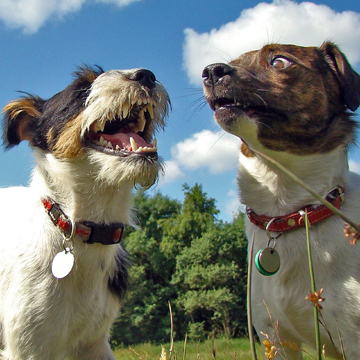March 11, 2009Comments are closed.dogs
Farm animal scientists are studying a type of body language in cows that’s similar to one dog behaviourists have been using for years in assessing a dog’s mental state: the ‘whale eye’…
.-.-.-.-.-.-.-.-.-.-.-.-.-.
A University of Guelph study, which will appear in the June issue of the Journal of Animal Science, shows that cows, bulls and steers that are easily upset will have much more white exposed in the visible part of their eyes – a finding that could have advantages for farmers.
For a cow who can calmly chew her cud in sticky situations, the white part typically makes up only 10 to 20 per cent of the exposed eyeball, says lead study author Sarah Core, who has a master’s degree in animal science from the school.
“We found that most of the most highly excitable cows had more than 50 per cent white around the eye,” says Core, 23.
The eye white size was compared to other agitation measures, such as how well the beasts tolerated restraint and the speed of their flight from handlers. Core, who looked at about 120 Angus and Piedmontese-type cattle, says that breeding only those beasts with smaller whites could produce more docile herds.
The Star

Cows – just big dogs really
.-.-.-.-.-.-.-.-.-.-.-.-.-.
If you’ve not heard of a ‘whale eye’ it’s a body language signal a dog gives off when it’s uncomfortable. While a relaxed dog will move their whole head to look at something, a frightened dog will hold his body stiffly looking at things out of the corner of their eye. If you can see the whites of a dog’s eyes repeatedly or constantly you’re dealing with an anxious animal… and I reckon you should back up a little there, buddy.
I highly recommend checking out this blog – it has some brilliant dog behaviours caught on film for your wonder-what-happened-next? guessing pleasure.

Giving you the (whale) eye